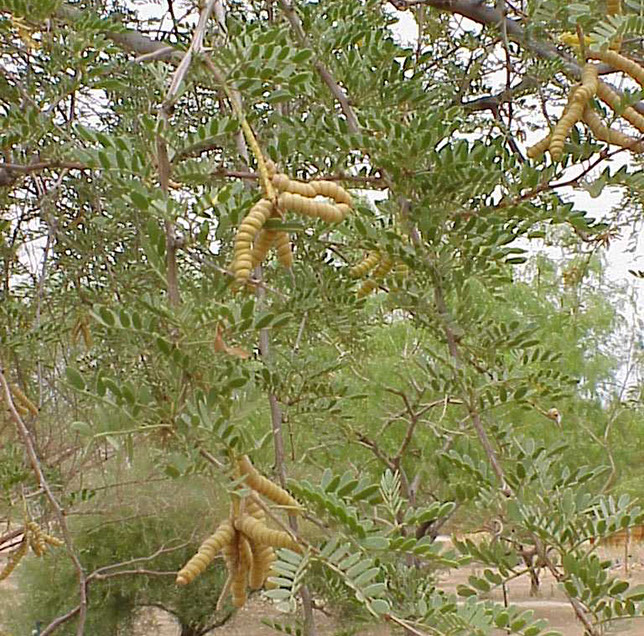


Prosopis pubescens
Screwbean Mesquite
Foliage: Deciduous
Mature Height: 15’ - 25’
Mature Width: 15’ - 24’
Growth Rate: Moderate
Hardiness: 0 degrees F
Exposure: Full Sun
Leaf Color: Pale Blue-Green
Shade: Filtered
Flower Color: Pale to Yellow
Flower Shape: Fuzzy Spike
Flower Season: Late-Spring
Thorns: Yes
Propagation Method: Seed
Sizes Available: #25

Perhaps the first thing people notice about the Prosopis pubescens, Screwbean Mesquite is the unusual spiral of the seed pods from which it takes its name. The tree is sometime referred to as a large shrub, but in landscape settings it regularly grows to 25' tall and as wide. Unpruned it has a shrub like growth habit with fairly dense branching. Pale to very bright yellow, 2" to 3", spike blooms are produced from May to June. The foliage is pale blue-green and made up of leaves with as many as 18 tiny leaflets. The tree bark matures from a reddish-brown to a thick gray-brown, uniquely shaggy bark, while young twig tips are gray. The tree grows at a moderate rate and is deciduous in winter. Screwbean are found, at elevations below 4000 feet, in California, Nevada, Utah, Arizona, western Texas, New Mexico and northern Mexico including Baja, Sonora, Coahuila and Chihuahua. Unlike many desert natives, Screwbean cannot be naturalized to survive on rainfall alone. Supplemental summer irrigations are essential in most Southwestern desert locations. In the desert this tree is found primarily along water courses and in "bottomlands" that experience periodic flooding. The tree will tolerate lawn plantings. It is hardy to 0 degrees F (-18 C). Tornillo, which in Spanish means screw, clamp or vise, is a common name sometimes associated with Screwbean Mesquite.
With its beautiful spring flowers, it is an excellent accent tree or it can be used as a specimen in more elaborate landscape designs. It is also used in the landscape as a background tree along with flowering shrubs or as a transitional planting between landscaped areas and undisturbed native desert. Its moderate stature, at maturity, allows it to blend in with other desert tree species in more elaborate landscape designs, adding texture and variety. Its modest mature size is ideal for courtyard and patio settings.


© Copyright 2000-2020 Arid Zone Trees